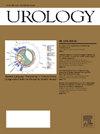Can Female Voiding Dysfunction Be Predicted Using a Questionnaire?
IF 2
3区 医学
Q2 UROLOGY & NEPHROLOGY
引用次数: 0
Abstract
Objective
To evaluate symptoms using the modified International Prostate Symptoms Score (wIPSS) questionnaire and clinical factors that could indicate objective voiding dysfunction (VD) in women.
Methods
One thousand eighty-three women who underwent urodynamic assessment were retrospectively analyzed. The primary outcome was objective VD. Two definitions were utilized; VD1 defined VD as maximum flow rate <10th centile on the Liverpool nomogram, while VD2 defined VD as Qmax ≤15 mL/s and PVR ≥100 mL. Associations of potential explanatory variables with VD were assessed by standard bivariate testing. Classification and Regression Tree analyses were conducted to assess the discriminatory power of explanatory variables for VD.
Results
The prevalence of objective VD depended on the definition used (VD1-30.9% vs VD2-5.8%), as did the median wIPSS score (VD1-15, interquartile range (IQR) 10-20 vs VD2–12.5, IQR 10.3-22.8). Age, menopausal status, previous pelvic floor surgery, current degree of anterior/apical prolapse, a medical history of diabetes or neurological disease, the wIPSS score, as well as the wIPSS with additional items were associated with VD. CART analysis revealed the questions regarding force of stream (FOS) and hesitancy were the strongest predictors for VD.
Conclusion
Rates of objective VD depend on the definition used. VD was associated with the overall wIPSS score, and the additional questions of hesitancy and FOS, which proved to be the most powerful predictors. This modified wIPSS may be a useful tool in screening for the absence of objective VD.
Brief Summary
Can we use a non-invasive screening tool to evaluate for female VD?
女性排尿功能障碍能否通过问卷调查来预测?
目的:使用改良的国际前列腺症状评分表(wIPSS)评估症状,并评估可能表明女性客观前列腺增生的临床因素:使用改良的国际前列腺症状评分(wIPSS)问卷对症状进行评估,并评估可提示女性客观VD的临床因素。方法:对接受尿动力学评估的1083名女性进行回顾性分析。主要结果是客观 VD。采用了两种定义:VD1 将 VD 定义为利物浦提名图上第 th 百分位数的最大流速,而 VD2 将 VD 定义为 Qmax ≤ 15ml/s 和 PVR ≥ 100ml。潜在解释变量与 VD 的关系通过标准双变量检验进行评估。进行了分类和回归树(CART)分析,以评估解释变量对 VD 的判别能力:结果:客观 VD 的患病率取决于所使用的定义(VD1-30.9% vs. VD2-5.8%)以及 wIPSS 的中位数评分(VD1-15,IQR 10-20 vs. VD2-12.5,IQR 10.3-22.8)。年龄、绝经状态、既往盆底手术、目前的前脱垂/脱肛程度、糖尿病或神经系统疾病病史、wIPSS 评分以及带有附加项目的 wIPSS 均与 VD 相关。CART分析表明,有关流力(FOS)和犹豫不决的问题是预测VD的最强指标:结论:客观 VD 率取决于所使用的定义。VD 与 wIPSS 总分以及犹豫不决和 FOS 这两个附加问题有关,而这两个问题被证明是最有力的预测因素。简而言之:我们能否使用无创筛查工具来评估女性排尿功能障碍?
本文章由计算机程序翻译,如有差异,请以英文原文为准。
求助全文
约1分钟内获得全文
求助全文
来源期刊

Urology
医学-泌尿学与肾脏学
CiteScore
3.30
自引率
9.50%
发文量
716
审稿时长
59 days
期刊介绍:
Urology is a monthly, peer–reviewed journal primarily for urologists, residents, interns, nephrologists, and other specialists interested in urology
The mission of Urology®, the "Gold Journal," is to provide practical, timely, and relevant clinical and basic science information to physicians and researchers practicing the art of urology worldwide. Urology® publishes original articles relating to adult and pediatric clinical urology as well as to clinical and basic science research. Topics in Urology® include pediatrics, surgical oncology, radiology, pathology, erectile dysfunction, infertility, incontinence, transplantation, endourology, andrology, female urology, reconstructive surgery, and medical oncology, as well as relevant basic science issues. Special features include rapid communication of important timely issues, surgeon''s workshops, interesting case reports, surgical techniques, clinical and basic science review articles, guest editorials, letters to the editor, book reviews, and historical articles in urology.
 求助内容:
求助内容: 应助结果提醒方式:
应助结果提醒方式:


